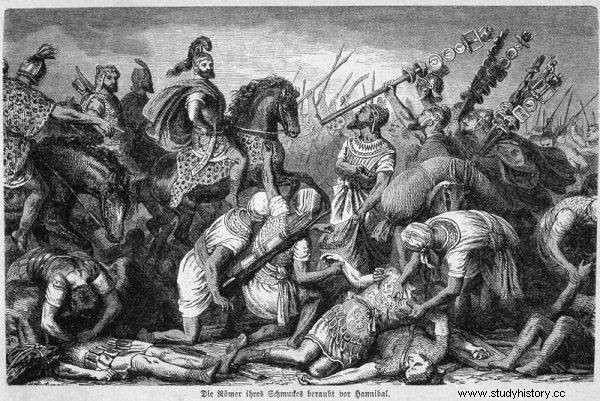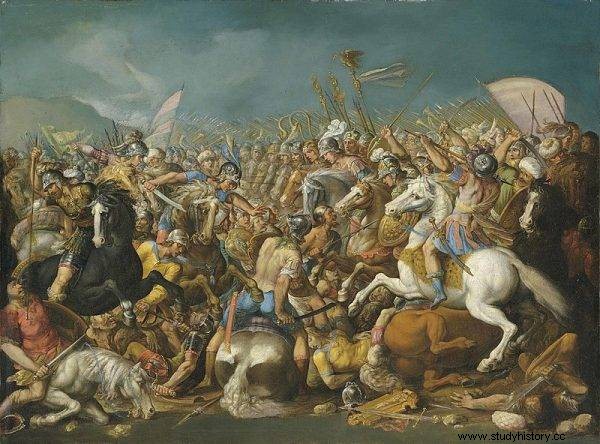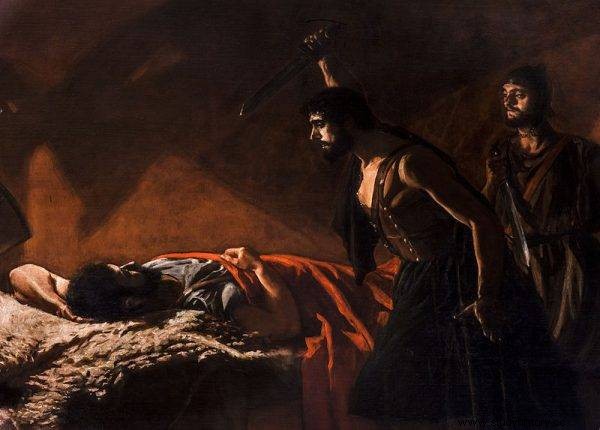Rome was forced to engage in military operations on the Iberian Peninsula. The Second Punic War seemed extremely easy to win. It was Hannibal who challenged the Empire, but he wasn't the only commander the Romans underestimated ...
After the end of the First Punic War, Carthage, defeated by Rome, did not intend to give up its influence in Europe. Hamilcar was sent quite quickly to the Iberian Peninsula, and within a few years he conquered the southern and eastern coasts. Rome initially did not react to these actions, mainly because the assigned tribute was received in the treasury on time. In addition, the Romans were busy with the activities carried out in Gaul. However, that was about to change soon.
To the war
He became the governor of Punic Spain in 220 BCE. Hannibal. That same year, a Roman legation faced him, threatening to war if a young commander attacked the city of Sagunt. How clever this was! Moments earlier, the Sagutins had attacked one of the tribes allied with Carthage.
Under these circumstances, there was of course no question of any kind. A year later Hannibal besieged Sagunt, and the next Rome declared war on Carthage. He certainly hoped for a quick victory over his opponent, who was weakened after the first conflict. The Romans took this war lightly, convinced of their superiority and superiority over the Carthaginian army . An army of half the size of the previous operations in Gaul was put up for battle.
Hannibal was aware that he was unable to rebuild the fleet and defeat the enemy on two fronts. Therefore, he chose a strategy that assumed that his ground troops would infiltrate Italy and provoke a rebellion among Roman allies. On the Iberian Peninsula, troops were sent here in 218 BCE. - it was this move that cut Hannibal from his back.

In 212 BCE, after the famous Battle of Cannae, the Romans changed their military strategy to an offensive one.
The Carthaginians marched on Rome with successive victories. In 212 BCE, after the famous Battle of Cannae, the Romans changed their military strategy to an offensive one. Hannibal was forced into a defensive action and was awaiting reinforcements from Spain. These, however, did not come because four Roman legions were operating in these areas.
The events on the Ebro River eventually led to the great success of the Roman commander Scipio the African the Elder. Under his command, the Roman army in 209 BCE captured New Carthage - the Punic capital - and the arsenal. By the end of 206 B.C. the Punic army was ousted from what is today Spain. The conflict ended at Zamma in 202 BCE, when Hannibal's army was finally defeated.
New Province
The consequence of the Second Punic War was the taking of further actions in the Iberian Peninsula and finally the creation of a Roman province here. However, it was still a long process that lasted until around 16 B.C.E. The Second Punic War was only a prelude to the long battles that the Romans had to wage in the area.
The next stage in establishing domination on the Iberian Peninsula was suppressing the revolts of local communities. Peoples who joined Hannibal during the war ended were declared rebels. So it was natural to quickly take control of their territory.
Further actions were dictated by the open border that Rome could not leave unattended. As a result, in 197 BCE On the territory of the peninsula, two Roman provinces were established:Near and Far Spain. However, this was not the end of the Roman plans in Iberia.
Thanks to the legions stationed in the provinces and regular tributes, a relative calm was maintained. The local communities initially rejoiced at being released from the Carthaginian yoke. Many of them kept their traditions, even their own coins were minted here.
The Lusitan Wars
In the 2nd century BC The autonomy of the conquered peoples was almost no longer respected and heavily exploited. The warlike tribes finally realized the Roman occupation and began to rebel. This, in turn, led to armed intervention and further fights - this time with peoples from central and western Iberia.
The Lusitians and Celtybers plundered the areas south of the Tagus River. The first armed clash with the Roman army took place in 194 BCE. while returning from an attack to the southern Spanish province. The following years brought further fights which kept the conflict in a relative balance of power.

The next stage in establishing domination on the Iberian Peninsula was suppressing the revolts of local communities. The peoples who joined Hannibal during the war ended were declared rebels.
The turning point in the war happened in 155 BCE. The brave plenaries started an open war, which turned out to be extremely bloody. These fights were to be ended for a moment by the governor of the province, Servius Sulpicjusz Galba who in 150 B.C.E. he offered the rebels a deal. In return for ending their attacks, they were to receive fertile land that they could cultivate. After the pact was concluded, the governor ordered them to be murdered.
Invincible
Few survived the massacre. To Roman misfortune, Viriatus, who led the next Lusitan uprising, survived. He turned out to be a leader like Hannibal, and the rebellion under his command lasted over 10 years. The actions taken by Viriatus and the adopted strategy meant that Rome had to send troops to Further Spain four times.
The fights were extremely bloody and exhausting. The governor had to save himself by making peace in order not to lose both the army and the province. This room was subsequently declared "shameful". It was severed and the fighting continued. Who knows what would have happened if it had not been for another insidious plan of Rome!
Trick to win
Further peace talks took place in 139 BCE. Viriatus sent his three most trusted men to the provincial governor to establish the terms of the ceasefire. The envoys were bribed, however, and upon their return slit their commander's throat in his sleep.

Viriatus sent his three most trusted men to the provincial governor to establish the terms of the ceasefire. However, the envoys were bribed and on their return slit their commander's throat in his sleep.
Viriatus was succeeded by Tautalus, who eventually brought the war to an end. Peace was made in 136 B.C.E. on Roman terms. The Lusitans received only a small area. But although there was no other leader like Viriatus, Rome needed another century to feel relatively safe in Iberia.
The Iberian peoples continued their plundering attacks in the following years. In 61 B.C.E. Julius Caesar became the governor of Further Spain. He asked the local community to leave the fortified settlements on the hills. The refusal was a pretext for taking further military actions on the peninsula.
The conquest of Iberia finally ended under Emperor Augustus which around 16 B.C.E. he established three new Roman provinces in these territories:Tarraconensis, Bethica and Lusitania. Soon after the borders were established, the long process of stabilizing the new administrative units and slowly connecting local communities with Roman culture began.
And if you are interested in the further fate of the Iberian Peninsula, be sure to check out the latest Polsat Viasat History series "The Birth of Spain", premiered on September 19 at 19:55.
Literature:
- Curchin L. A., Roman Spain. Conquest and Assimilation , London / New York. 1991.
- Ziółkowski A., History of Rome , Poznań 2008.
